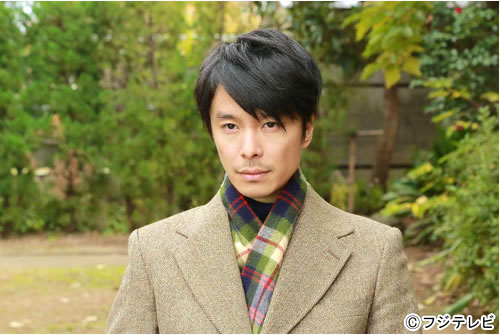And, apparently, here they are. Enjoy the Japanese ratings of late 2021!
If a book has an additional European (ordinarily English) title on its cover, I add it after a comma. If in such a case that title is the exact translation of the Japanese one, I give no translation of the title.
In each subsequent list, I only emphasize titles that did not occur in the previous.
Honkaku Mystery Best 10 2022
(most orthodox-skewed one, November 2020-October 2021)
Japanese
- 黒牢城, Arioka Citadel Case (Black Gaol Fortress) by Yonezawa Honobu (non-series collection of six stories)
- 蒼海館の殺人, Murder of Aomikan by Atsukawa Tatsumi (the second entry in the planned "Yakata Quartet" series, continuing the Murder of Gurenkan of 2019, reviewed by Ho-Ling Wong here)
- 兇人邸の殺人 (The Murders in the House of Maleficence) by Imamura Masahiro, the third novel in the series started by Death among the Undead, already reviewed by Ho-Ling Wong
- 六人の嘘つきな大学生 (Six Lying Students) by Asakura Akinari
- 硝子の塔の殺人, The Glass Tower Murder by Chinen Mikito, a non-series novel
- 大鞠家殺人事件 (Murder in the Oomari House) by Ashibe Taku, a non-series novel
- 孤島の来訪者 (Visitors on the Remote Island) by Hōjō Kie, second in the "Ryūzen Family" series, reviewed by Ho-Ling Wong
- 忌名の如き贄るもの (Those Who Sacrifice like a Real Name) by Mitsuda Shinzō, the new, eleventh entry in the Tōjō Gen'ya series
- invert 城塚翡翠倒叙集 (invert: The Inverted Detective Story Collection for Jōzuka Hisui) by Aizawa Sako, a collection of three stories featuring Jōzuka Hisui of the medium fame
- あと十五秒で死ぬ (To Die in Fifteen Seconds) by Sakakibayashi Mei, the author's first published book, comprising two stories previously printed in magazines and two originally added
- Moonflower Murders by Anthony Horowitz
- A Good Girl's Guide to Murder by Holly Jackson
- 文學少女對數學少女, Le Dernier Problème de Fermat (The Literature Girl Vs. the Math Girl) by Lù Qiūchá (colleciton of four stories)
- Eight Detectives by Alex Pavesi
- Black Summer by M. W. Craven
- The Sleeping Tiger by Dominic Devine (D. M. Devine)
- Cold Earth by Ann Cleeves
- The Sleepwalker by Joseph Knox
- Le Roi du Désordre (The Lord of Misrule) by Paul Halter
- The October List by Jeffrey Deaver and The Stranger Diaries by Elly Griffiths
Shūkan Bunshun Mystery Best 10 2021
- 黒牢城, Arioka Citadel Case (Black Gaol Fortress) by Yonezawa Honobu
- テスカトリポカ (Tezcatlipoca) by Satō Kiwamu
- 兇人邸の殺人 (The Murders in the House of Maleficence) by Imamura Masahiro
- 硝子の塔の殺人, The Glass Tower Murder by Chinen Mikito
- 白鳥とコウモリ (Swan and Bat) by Higashino Keigo, a non-series novel
- 六人の嘘つきな大学生 (Six Lying Students) by Asakura Akinari
- 機龍警察 白骨街道 (Inspector Kiryū: Skeleton Road) by Tsukimura Ryōe
- 蒼海館の殺人, Murder of Aomikan by Atsukawa Tatsumi
- 琥珀の夏 (The Amber Summer) by Tsujimura Midzuki
- おれたちの歌をうたえ (Sing Our Song) by Go Katsuhiro and 忌名の如き贄るもの (Those Who Sacrifice like a Real Name) by Mitsuda Shinzō
- Moonflower Murders by Anthony Horowitz
- A Good Girl's Guide to Murder by Holly Jackson
- The Stranger Diaries by Elly Griffiths
- The Thursday Murder Club by Richard Osman
- The Twelve Lives of Samuel Hawley by Hannah Tinti
- The October List by Jeffrey Deaver
- Eight Detectives by Alex Pavesi
- Tokyo Redux by David Peace
- 私家偵探, Private Eyes by Jǐ Yùrán
- The Sleepwalker by Joseph Knox and Trois jours et une vie (Three Days and a Life) by Pierre Lemaitre
Kono Mystery ga Sugoi! 2022
- 黒牢城, Arioka Citadel Case (Black Gaol Fortress) by Yonezawa Honobu
- テスカトリポカ (Tezcatlipoca) by Satō Kiwamu
- 機龍警察 白骨街道 (Inspector Kiryū: Skeleton Road) by Tsukimura Ryōe
- 兇人邸の殺人 (The Murders in the House of Maleficence) by Imamura Masahiro
- 蒼海館の殺人, Murder of Aomikan by Atsukawa Tatsumi
- invert 城塚翡翠倒叙集 (invert: The Inverted Detective Story Collection for Jōzuka Hisui) by Aizawa Sako
- 忌名の如き贄るもの (Those Who Sacrifice like a Real Name) by Mitsuda Shinzō
- 六人の嘘つきな大学生 (Six Lying Students) by Asakura Akinari
- 硝子の塔の殺人, The Glass Tower Murder by Chinen Mikito
- 雷神 (God of Thunder) by Michio Shūsuke, third in "Gods" series
- Moonflower Murders by Anthony Horowitz
- A Good Girl's Guide to Murder by Holly Jackson
- The Sleepwalker by Joseph Knox
- The Twelve Lives of Samuel Hawley by Hannah Tinti
- 私家偵探, Private Eyes by Jǐ Yùrán and The October List by Jeffrey Deaver
- -
- His & Hers by Alice Feeney
- The Thursday Murder Club by Richard Osman
- Tokyo Redux by David Peace
- Eight Detectives by Alex Pavesi
Mystery ga Yomitai 2022
- 黒牢城, Arioka Citadel Case (Black Gaol Fortress) by Yonezawa Honobu
- テスカトリポカ (Tezcatlipoca) by Satō Kiwamu
- 機龍警察 白骨街道 (Inspector Kiryū: Skeleton Road) by Tsukimura Ryōe
- 蒼海館の殺人, Murder of Aomikan by Atsukawa Tatsumi
- 兇人邸の殺人 (The Murders in the House of Maleficence) by Imamura Masahiro
- 忌名の如き贄るもの (Those Who Sacrifice like a Real Name) by Mitsuda Shinzō
- インタヴュー・ウィズ・ザ・プリズナー (Interview with the Prisoner) by Minagawa Hiroko
- 六人の嘘つきな大学生 (Six Lying Students) by Asakura Akinari
- invert 城塚翡翠倒叙集 (invert: The Inverted Detective Story Collection for Jōzuka Hisui) by Aizawa Sako
- 蝶として死す 平家物語推理抄 (Die Like a Butterfly: Heike Monogatari Deductive Collection) by Saitō Asuka, collection of five stories
- A Good Girl's Guide to Murder by Holly Jackson
- Moonflower Murders by Anthony Horowitz
- The Thursday Murder Club by Richard Osman
- The Twelve Lives of Samuel Hawley by Hannah Tinti
- The October List by Jeffrey Deaver
- Eight Detectives by Alex Pavesi
- His & Hers by Alice Feeney
- The Stranger Diaries by Elly Griffiths
- The Sleepwalker by Joseph Knox and 私家偵探, Private Eyes by Jǐ Yùrán

















